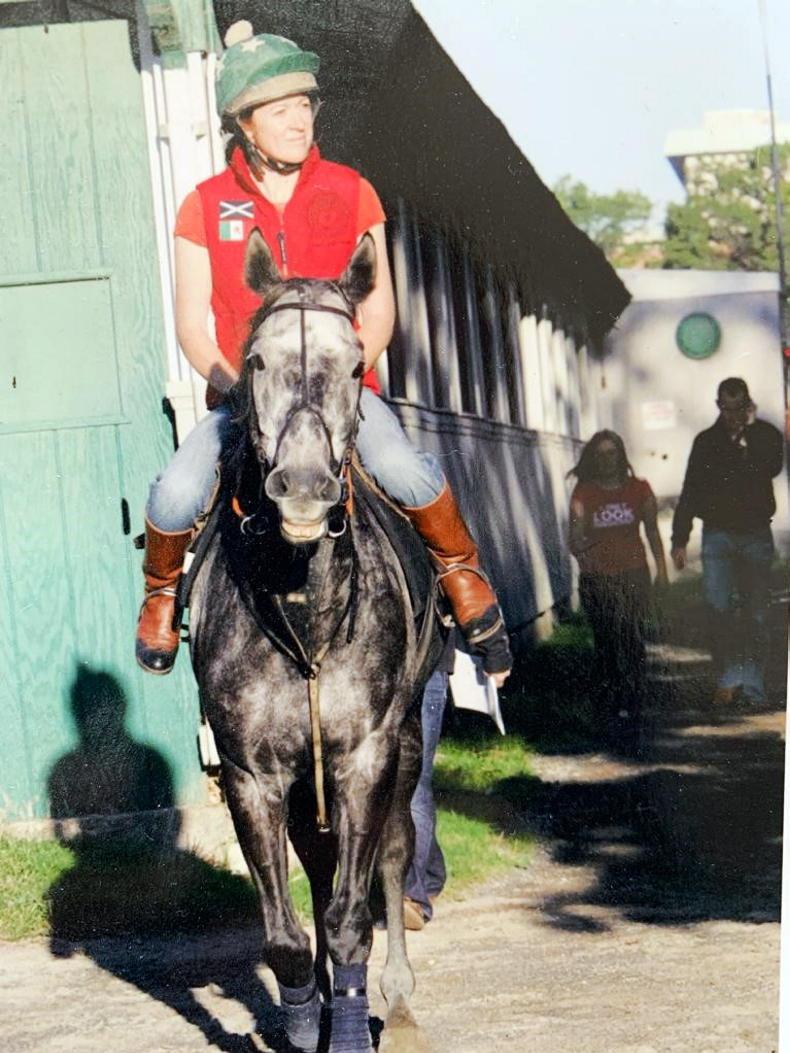Louisa Williams is a native New Zealander, but after 23 years here in Ireland, she’s Irish enough for me. Having worked in the thoroughbred industry since her school days, a chance meeting with a manager of Coolmore Stud at the Sydney sales led her to our shores.
“To come over here and see where these pedigree lines I’d worked with in New Zealand had come from was exciting,” Louisa explains. “I just wanted to learn as much as possible. I also absolutely loved the people. We worked super hard but there were plenty of nights in McCarthy’s in Fethard!”
In Louisa’s head, to work at Ballydoyle was ultimately the goal, but Aidan O’Brien hadn’t long taken over the reins, and she didn’t get the opportunity straight away.
Never to be halted, she worked in France doing the sales in Deauville and then went on to Kentucky, to ride out at Keenland and Churchill Downs.
Charlie Swan
Louisa made it to Ballydoyle eventually and whilst there was offered a job by then jockey and now trainer, Charlie Swan, who was visiting Ballydoyle regularly to ride out the famous Istabraq.
“I went to Charlie’s yard after my three years at Ballydoyle and was travelling the horses a lot. I learned from some of the great traveller lads from trainers Jim Bolger’s and John Oxx’s yards and I took horses to Dubai and New York.”
As part of her work Louisa spent a lot of time taking horses backwards and forwards to vets, which germinated an idea that would ultimately change her life; she explains: “As everyone knows, in racing (and other disciplines) there is a problem with the number of tendon injuries.
"What I often saw was horses on box rest with restricted movement during rehabilitation, it just didn’t make sense to me. I wanted to develop something that could stimulate the leg while they were standing, to help repair it.
“The more I thought about this idea of repairing while standing, the more I became obsessed with it, and it was hard to find the hours to read what I needed to read whilst still working in racing. I also had a horse in training myself who developed suspensory ligament pain.
"I just kept going; it took three years of reading every tendon research paper written, human and equine. What I learnt was the only way for tendons to regenerate and repair was to load them, but if horses go out they can reinjure themselves, so I needed to find a way to work these tendons whilst standing still. That’s where the idea for the Ice-Vibe therapeutic boots began.”
Louisa admits she was never a fan of standing horses in ice and reducing temperature severely. “Usually, with humans, when we ice them, we ice and the person moves; but we ice horses in their stable. Yes, it reduces the temperature but horses then have no way to kick start the blood flow.”
Middle ground
To solve the problem, Louisa wanted to find a happy medium: “There is an argument for cooling the legs after exercise if tendons are very hot,” says Louisa. “But once they’ve cooled down, the only way for legs to recover is through flushing out lymphatics and returning blood flow.
"And it’s only movement of the horse’s circulation that can do that. In the Ice-Vibe boots the massage is there to stimulate the lymphatics and the blood flow. The ice stops it from overworking and vice versa.
“What I used to see by using the boots during all the product testing we did, was the lymphatics were probably one of the biggest problems. So if I could find a way to support the lymphatics, which the vibration does, and stimulate soft tissue to help heal, which the vibration does and then add the cold which prevents overworking of the leg. This combination of factors creates the ideal environment for recovery.
“It was a difficult journey; in development I built a couple of prototypes here in Ireland which weren’t very successful and cost a huge amount of money. I had the support of Enterprise Ireland, but I quickly realised that the prototypes I had were a long way from where I visualised the end product to be.
"I found a company in Hong Kong that was doing wearable electronics and was run by a New Zealander, so I thought that was a good fit.”
Louisa had samples made and put the electronics into a wraparound boot, and with a solid belief in her idea, contacted Tom McGuinness, CEO at Horseware Ireland. “Anyone who knows Tom McGuinness knows that he thinks outside the box.” Louisa says.
“We agreed that he would take the product. I had just left Charlie Swan’s, so I started working full-time for the Horseware research and development team who then fully developed the final product and packaging.”
Success
From there the Ice-Vibe boots and associated ranges have had huge international success and are used by the likes of Olympic eventer William-Fox-Pitt and three-time Olympic gold medallist Michael Jung.
Further highlighting the success of the product, the Ice-Vibe boots are now prescribed by vets too; Louisa reflects: “It has been a long road and I think one of the highlights of my day is when you get emails back and the Ice-Vibe boots have made a difference, not just to the top horses, but also to the everyday horse that someone loves.
"Those stories make all those long days in the kitchen cutting and pasting and reading papers really worthwhile.”






 This is a subscriber-only article
This is a subscriber-only article






SHARING OPTIONS: